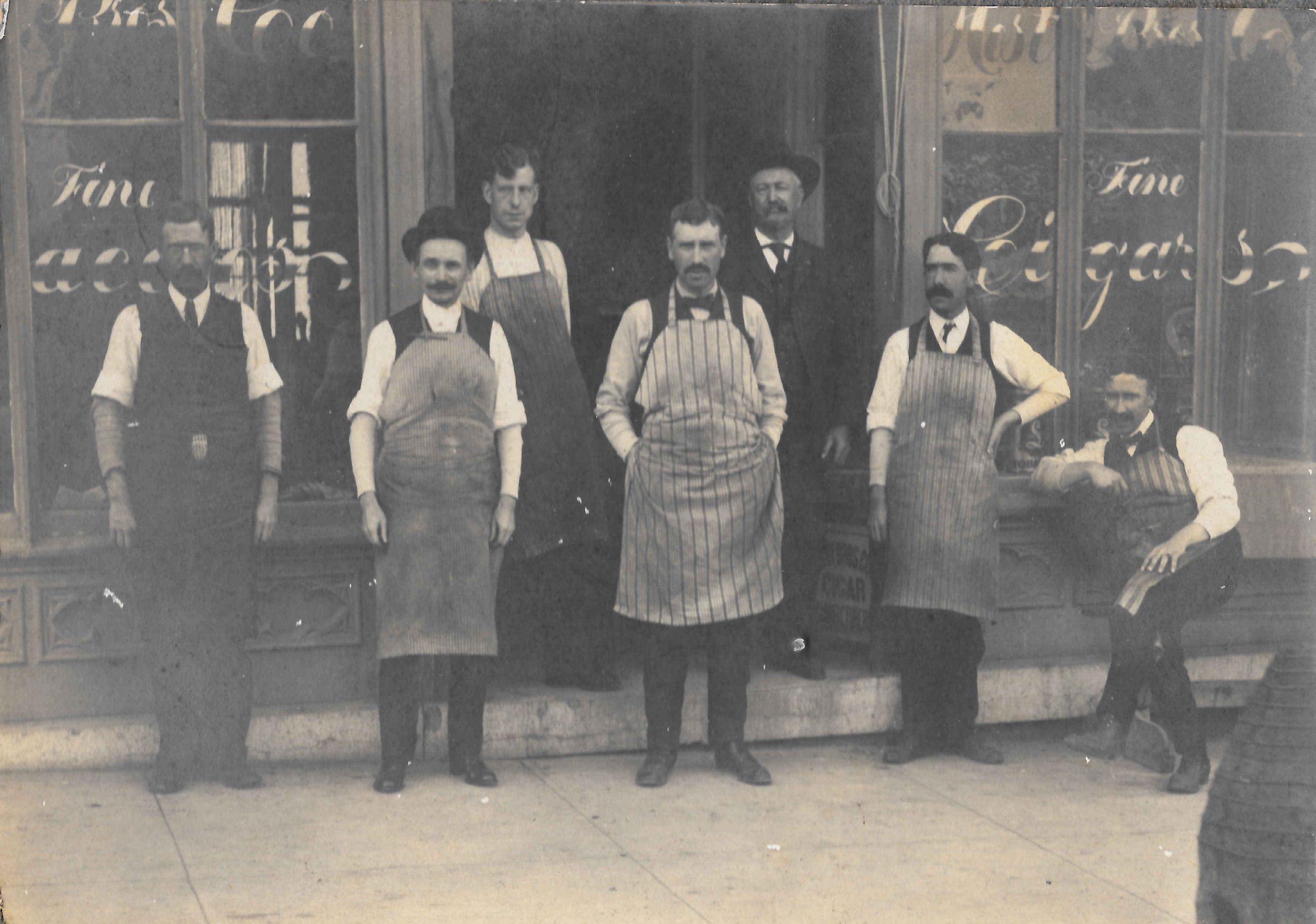In 1882 the New York State Experiment Station wrote that, “Perhaps no crop grown in our State gives better rewards for careful management than tobacco.” Many of us don’t realize that in the late 1800s tobacco was a major crop, especially in Oswego and Chemung river valleys. In 1864 thirteen-million pounds of tobacco were grown in New York. The Cigar History Museum calculates that in the 19th and 20th centuries, New York State had 4,495 cigar factories, and these were about evenly divided between the New York City area with around 1800 and upstate with about 2600. At the time, tobacco was a high value crop and even a small plot could help to pay the bills for a year. When harvested, the leaves of the plant need to be dried in special barns that often had a cupola and some type of doors or slots that could be opened to allow ventilation while keeping the crop safe from the rain.
Although tobacco was not a major crop in Mentz, the production of cigars was a large industry in the village with names such as Davis & Dickey, Hest Rooney & Hest, Willard Vosburgh, Edward Slayton, Major Dodge, Al Humphrey, among others. The growth of tobacco in Cayuga County and the manufacture and sale of cigars played an important financial and societal role in Port Byron, which was considered a cigar manufacturing center featuring many well-known brands. And the growth of this trade can be seen in the censuses. In 1860 there were three tobacconists, although records show that there were more employed in this industry. In 1870 there were 13 who listed themselves as cigar workers, packers, or simply in the cigar factory. In 1880 there were 27, in 1900 there were 24, and in 1910 there were 19. Oddly, as the number of tobacco growers in New York, and the resulting crops, declined after the Civil War, the manufacturer of cigars grew to its peak around 1900 with the tobacco leaves being imported from the southern states. This fact has led to some interesting speculation when we find local folks marrying southerners after the war.
Local brand names ranged from Hest Rooney & Hest’s “Senator” to Willard Vosburg’s “Message,” which was advertised as an “A-1 Smoke!” Sam Davis even offered the “Davis’ Original 1854” after looking over an old 1854 diary where he found a vintage formula which he successfully remarketed.

David and Joseph Hest originally established their firm, “Hest Brothers,” in Port Byron in 1883 and were later joined by Samuel Roney. These men had common roots, as their respective fathers emigrated from Ireland to Port Byron. It’s not certain whether they arrived together from Ireland, but it is apparent that the families shared frequent social ties as found in local news accounts. Originally located in the Burritt Block, they moved to the Tatgenhorst Block by 1891. Competition must have been keen as a news article even detailed the shop’s redesign. An 1889 Post-Standard article reported that the firm had received an order for one-hundred-thousand cigars from one cigar house in Utica. “Every cigar in their establishment is sold and they are behind in their orders after receiving this last order.” This is remarkable as cigars were still hand rolled, as machine rollers weren’t introduced until the 1920s.
One of the more prominent and earliest cigar manufacturers was “Davis & Dickey,” owned by John L. Davis and Thomas B. Dickey. The 1863-1864 directory shows that they were as located on “Rochester W Main.” Accounts indicate that a number of the later cigar manufacturers in Port Byron got their start at Davis & Dickey.
Frank Hicks was a life-long employee of Davis & Dickey entering their employ in 1861, with the exception of his years served in the 3rd NY Infantry. It was estimated that while he was employed by Davis & Dickey he had made 2,400,000 cigars, and that in his lifetime he had rolled “more than three million smokes.” Well into his 80s Mr. Hicks could still be seen “at his board” where he hoped to make “another million or two”!
Samuel Davis took over the enterprise after Thomas Dickey and his father John had passed and rebranded the company as S. J. Davis Cigar Manufacturing Company. Continuing in his father’s footsteps he, too, was a successful Port Byron entrepreneur as accounts indicate over 300,000 cigars were sold by his company in the year of 1904.
Much of the information for this article was taken from a column written by Joyce Bis for the Spring 2021 Lock 52 Chronicle. If your family was involved in the growing or production of tobacco, she would like to hear from you.
